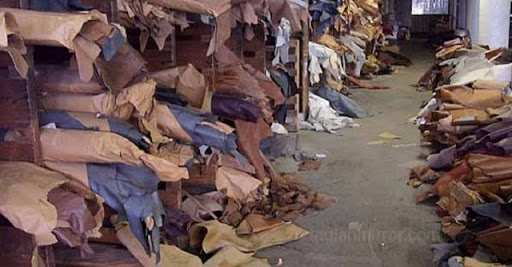Leather sector strategy to maximise value
CABINET has approved the new Zimbabwe Leather Sector Strategy 2021-2030 that is anchored on increased investments and maximising on value addition and beneficiation to promote export-led industrialisation.
The leather sector is regarded as a low-hanging fruit for the Zimbabwean economy given the country’s comparative advantages in livestock and crop production, which provide key raw materials.
The strategy, which is a successor to the Leather Sector Strategy (2012-2017), seeks to increase the overall competitiveness of the leather value chain in Zimbabwe and enhance access to both local and export markets for the finished products.
In a post-Cabinet media briefing on Tuesday, the Minister of Information, Publicity and Broadcasting Services, Monica Mutsvangwa, said the new strategy was expected to unlock more investment opportunities along the leather value chain and positively impact on the wider economy.
“Cabinet considered and approved the Zimbabwe Leather Sector Strategy (2021-2030), which was presented by the Minister of Industry and Commerce, Dr Sekai Nzenza, on Tuesday,” said Mutsvangwa.
“The new strategy will prioritise increased investments in industry, with emphasis on value addition and beneficiation of agricultural produce to promote export-led industrialisation as well as increase employment opportunities.”
The minister said Cabinet also noted the objectives of the strategy, which seeks to; increase capacity utilisation of value-added products from 30 percent to 75 percent by the end of 2030, enhance the application of sustainable production technologies by manufacturing companies from the current 10 percent to 60 percent by 2030 and increasing the export of leather products from 10 percent of production to 40 percent.
Guided by the new strategy, the sector would increasingly lobby for the development and reform of 70 percent of the identified policies and legal frameworks for the transformation of the sector by 2030, said the minister.
“The strategies to be employed to achieve the set objectives include the capacitation of the livestock farmers, the introduction of new technologies, the promotion of product and market development by value chain players and advocacy programmes on introduction of supportive policies,” said Mutsvangwa.
“The strategy also seeks to promote the rural industrialisation drive and the devolution agenda since it will be implemented through devolved structures to reach and empower the local communities.”
According to the Zimbabwe Leather Development Council (ZLDC), a review of the first leather strategy was done and showed minimal as the sector faced numerous challenges mainly from the macro-economic environment.
A ZLDC executive, Mr Clement Shoko, is on record saying: “To be honest there was very little progress with the first one. Quite a number of things were done but not to the expectations of the sector as per our engagement. We really wanted something more tangible to come out of the leather strategy”.-herald.cl.zw










